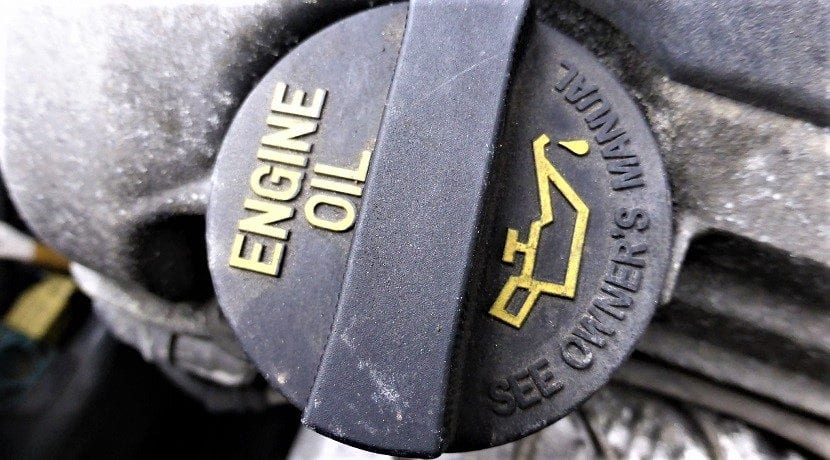
the cars with combustion engine require a precise mix of fuel and air to work. Something easy to obtain under normal conditions, but not so easy when we drive A lot of height and extreme temperatures. In both cases the performance and efficiency of the motor can be altered.
To understand it, one must know that combustion is a chemical reaction in which a fuel (petrol, diesel or gas) oxidizes very quickly. For this you need a oxidising (the oxygen in the air), which, thanks to a sudden increase in temperature, reacts with the carbon in the fuel and generates an explosion.
Knowing this, it will not surprise you that in situations where you have little oxygen, the explosions what can be achieved they are minors. Hence, many engines lose capacities in certain circumstances. Below we describe these conditions and some others that will cause your car to not be the same as always.

Why do engines lose power with height?
The higher we are, the less oxygen there is in the atmosphere. But, contrary to what some think, this is not due to a lower concentration of this element. Actually what there is is less air in general, with all its components. In other words, the oxygen concentration is the same at any altitude (21%), but at a high altitude there is less air and therefore less atmospheric pressure.
In the following table you can see how much the pressure drops depending on the height:
| Height | 0m | 1000m | 2000m | 3000m | 4000m | 5000m | 6000m | 7000m | 8000m |
|---|---|---|---|---|---|---|---|---|---|
| Height | 0m | 1000m | 2000m | 3000m | 4000m | 5000m | 6000m | 7000m | 8000m |
| Pressure | 1 atm | 0.88 atm | 0.78 atm | 0.69 atm | 0.61 atm | 0.53 atm | 0.46 atm | 0.40 atm | 0.35 atm |
Moreover, if we could drive to the top of the Everest, which is located at 8,848 meters above sea level, our car would have to run with approximately 0,33 atmospheres of pressure. That is, only a third of the air with which it works at full capacity.

Obviously we can't get there this way, the car altitude record is set today at 7.000 meters. But we can get to places where we will notice a considerable drop in engine performance. If you go further, in Spain there are 217 mountains of over 3.000 meters. heights at which atmospheric pressure is between 61 and 69%.
The brands know this, which is why they subject their cars to various tests, including driving at high altitudes. In our country we have a place where some manufacturers usually take their models to find out how they behave outside the laboratory: Sierra Nevada. Its highest part is at 3.478 meters and the route of its roads allow to test the car to high and low temperatures and at different atmospheric pressures. in a few kilometers you can vary the altitude at which you are at 2.100 meters.
cars with altitude sickness
The cars that suffer the most from power loss with height are the atmospheric ones. By not having any forced admission system through turbos, they have to conform to the atmospheric pressure that exists. Hence its name. The only thing you can do is decrease the amount of fuel you inject into the combustion chambers so as not to waste it by not having enough oxygen to burn it.

This operation is done thanks to the Lambda probe and switchboard. The first detects if the fuel and oxygen ratio is poor or rich and sends a signal to the latter. Then the control unit will modify the engine electronics to reduce or increase the amount of fuel.
On the contrary, turbocharged cars The current ones are programmed so that, when low pressure is detected, the turbo rotates at higher revolutions to compensate for lack of air. That is why they lose less power in these circumstances. Whether they run on gasoline or diesel.
How does heat affect
As we have commented before, in the cylinders there is a mixture de fuel and oxygen that allow to give life to our car. For that reason, if the oxygen suffers some alteration, the motor will notice it. Another clear example of this phenomenon occurs with The high temperatures.

The hotter the air, its density will be lower and the particles will have more movement. This state is not the most suitable for achieving good combustion and therefore power is lost. However, that is not why you should think that the colder the better. Low temperatures also have their negative consequences.

How cold affects the engine
Low temperatures also affect the operation of a combustion engine. Although in this case it is not a loss of power, because the amount of oxygen for the mixture will be enough. When we circulate at temperatures close to 0º centigrade the engine will consume more for several reasons:
- Takes longer to heat up: the moment in which a car consumes significantly more is at period in which it has not reached its service temperature. Also, when the temperature is very low there will be many circumstances in which will lose its ideal temperature to work, even if it had already reached it. For example, on descents in which the engine goes into inertia shutdown and does not inject fuel or when driving at very low revolutions and little consumption for a long time.
- The oil is more viscous: when driving at very low temperatures the engine lubricant is thicker and therefore create more friction, which translates into more consumption.

- Tires lose pressure: When lowering the temperature, the air is compressed and you lose pressure inside the wheel. This supposes a greater deformation of the tire and normally an increase in the contact surface with the ground, so friction increases and with it consumption. This problem is easy to solve, putting more air until reaching the pressure indicated for your tires.
- The alternator works more: As the efficiency of the batteries is lower at low temperatures, the Alternator have to work more than normal to produce the electrical energy needed by the battery to charge. Which also increases consumption.
Now imagine that you drive up a mountain and the factors of low temperature and little air come together. You can imagine that your car will not work as usual with such bad conditions. Hence there are changes. such as Amarok AT35, who prepare a vehicle just for that.
Images – Juozas Kaziukenas, Rogerio Camboim SA, Guillaume Vachey, Guillaume Vachey, George Payas, Sean MacEntee
Little laughs that I throw reading your moves
I'm going to ask you for the next kings partner, you're worth it, today that didn't make me laugh, not even the woman of my dreams made me hang out... 10 out of 10!